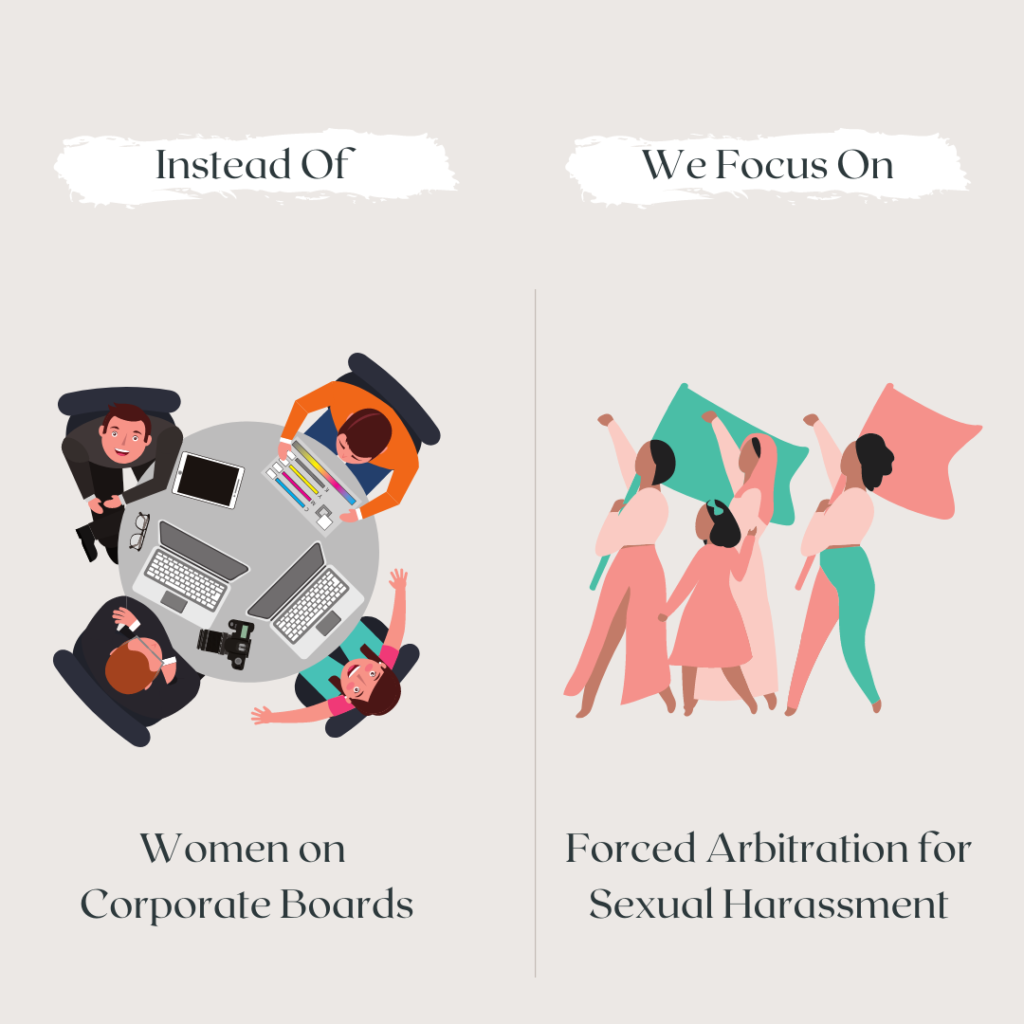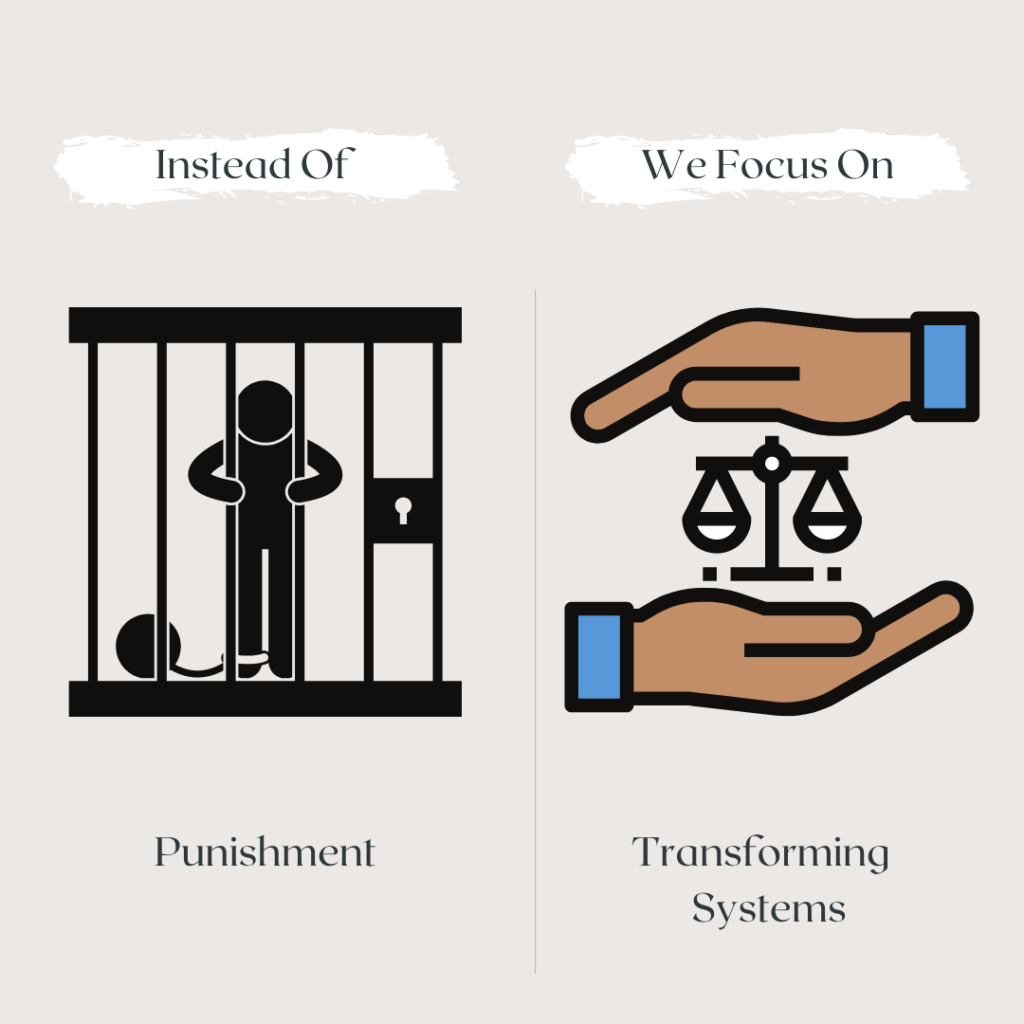By: Rachel Robasciotti, Founder & CEO
Social.
Justice.
Investing.
I’m certain you’ve heard each of these words before. You may be familiar with concepts of social justice, or perhaps not. You may be an investing expert or an investing novice. Wherever you are in your knowledge, welcome! Since first coining the term “social justice investing” in 20181, we have seen incredible interest both in our work and in answering the question, “What is social justice investing?”.
In this article I want to put those things together and explain what it means when we talk about “social justice investing”. First, let’s look at each of those three words separately, then I’ll put them back together to show how Adasina integrates them to advance social justice beyond existing ESG (environmental, social, and governance) approaches.
Social
At Adasina, everything we do, we do in community. When we think about our ability to impact social problems, we want to ensure we’re working on the issues identified by the communities most affected by inequities. We listen to these communities and then work in solidarity with them, as well as with other investors. Adasina’s commitment to social justice movements centers the voices of communities most impacted by injustice. By partnering with social justice organizations that have an established nationwide staff and infrastructure in addition to local representation, we form the relationships and collect the data needed to make a large-scale, systemic impact.2 These organizations have the expertise and ability to act as thought leaders, campaign collaborators, and bridge-builders between finance and social justice movements.
| Example: Gender Justice Metrics
Many ESG strategies address gender equity by looking at the percentage of women on corporate boards. To develop Adasina’s gender justice metrics, we listened to those most impacted by gender inequity and asked them about the issues they would like investors to address. We learned that serial sexual harassment at work was a primary issue not only for women, but also African American and low-wage workers.3 They asked investors to put an end to the forced arbitration policies at corporations that enabled serial sexual harassment.4 To learn more about Adasina’s efforts to advance gender justice, find our campaign work here. |
 |
|---|
Justice
Let’s talk about justice! In the US, people tend to think about justice in a punitive way, largely influenced by our complex criminal justice system and because we imprison people at a higher rate than anywhere else in the world. So, when American’s think about justice, they often associate it with punishment.
I’m talking about a different type of justice. Not the type of justice that is meted out on an individual basis, but the type that looks at the bigger picture and seeks holistic solutions.
At Adasina we think of justice not as punitive, but as restorative and transformative. We seek to acknowledge the harm done, find the root cause of the problem, and organize to dismantle the systems that uphold it. What that means for investing is using strategies to address the corporate behaviors and systemic practices that uphold the root problems that lead to injustice.
| Example: Decarceration
The US was founded on systemic racial injustice via the theft of land from Native Americans and labor from enslaved Africans.5 It is not surprising that there are now dozens of publicly traded companies that profit from disproportionately imprisoning and detaining Black, Native American, and Latinx people.6 Adasina and our social justice partners believe that in order to change this system we must begin at the root of the problem, so we organize to defund the companies that uphold this unjust system. We do this in partnership with social justice organizations seeking to offer alternatives to the current inequitable system of mass incarceration. |
 |
|---|
Investing
Investing in the public markets, at a basic level, usually means purchasing a stock or a bond in the hopes that as the company or government succeeds, the initial money you invested will also grow. This tool is used by investors from all asset levels to, hopefully, build wealth. But, investors are increasingly aware of, and dissatisfied with, the contributions their investments have made to generations of systemic racism and sexism, economic injustice, and climate change. Many people with social justice values have the question, is it possible for social justice and investing to work hand in hand? At Adasina, they can and they do.
We have chosen to invest in public markets not because we believe that this is the only way to invest for impact, but public markets are currently where the vast majority of wealth resides.7 In a capitalist economy, wealth is power8,9, and it takes tremendous power to change systems. We aim to use the power that public markets investors currently hold to have large-scale impact that not only changes our existing systems, but also advances movements for racial, gender, economic, and climate justice.
| Example: Climate Justice
With substantial people, time, and evidence, the public markets can be impacted by social justice movements. The movement for fossil fuel divestment led by climate change activists has, after many years, significantly impacted the viability of fossil fuel companies as well endangered their ability to access credit and financing.10,11 As a part of the movement for fossil fuel divestment, Adasina maintains fossil fuel free investment portfolios. Adasina also continues to work closely with climate justice organizers to identify other meaningful levers for combating climate change in public markets. |
 |
|---|
Putting it All Together
When we put all of the pieces above together, we’re harnessing:
- community-sourced (social) impact goals and data
- for systemic repair and transformation (justice),
- using the scale of public markets (investing)
In pursuit of large-scale, systemic change that advances social justice movements.
Where traditional ESG strategies match investments to a particular investor’s values, social justice investing works in community to make systemic change.
Investors may have a long-term risk advantage by shielding their portfolios from companies closely associated with social injustice that threaten both society and investor value through harmful practices. Our metrics and data, sourced from impacted communities, identify corporate practices that directly contribute to social injustice. Not only does continuing these practices put companies at serious reputational risk, but we believe they may be important early indicators of material risk to investors.
Social justice investing acknowledges that the influence of the financial markets extends beyond investors’ portfolios – it impacts the well-being and livelihoods of all people and our planet. This way of investing harnesses our collective power as investors to prioritize the social impact of investments, take direction from those most impacted, and dismantle inequitable systems to advance social justice.12
Endnotes:
- On August 14, 2017 Robasciotti & Philipson launched a community-sourced campaign to name its new impact investing platform (now Adasina Social Capital) and the corresponding approach it used, “social justice investing”. At that time, multiple search engines did not retrieve results for the term, indicating that there were no other for-profit or non-profit organizations using it. Adasina Social Capital first purchased and continues to own the domain name www.socialjusticeinvesting.com; it was purchased on July 25, 2018.
- Adasina Social Justice Partners
- News from EPI Press Release, “Women and African Americans are More Likely to be Subject to Mandatory Arbitration,” Economic Policy Institute (April 6, 2018).
- Jena McGregor, “Google and Facebook ended forced arbitration for sexual harassment claims. Why more companies could follow.” The Washington Post (November 12, 2018).
- Roxanne Dunbar-Ortiz, An Indigenous Peoples’ History of the United States, Beacon Press (2015).
- Ashley Nellis, Ph.D., “The Color of Justice: Racial & Ethnic Disparity in State Prisons,” The Sentencing Project (June 14, 2016).
- Federal Reserve, “Survey of Consumer Finances (SCF),” Federal Reserve (2019).
- Daniel D. Luria, “Wealth, Capital, and Power: The Social Meaning of Home Ownership,” The Journal of Interdisciplinary History (1976).
- Kevin Phillips, “How Wealth Defines Power,” The American Prospect (April 16, 2003).
- Kevin Crowley, “U.S. Oil Majors Downgraded by S&P on Climate Risk, Earnings,” Bloomberg (February 11, 2021).
- Bill McKibben, “The Powerful New Financial Argument for Fossil-Fuel Divestment,” The New Yorker (April 3, 2021).
- Rachel J. Robasciotti and Andrea Longton, “What is Social Justice Investing?,” The Social Justice Investor (2020).